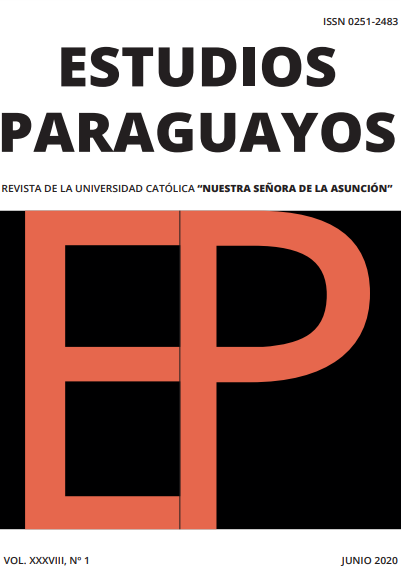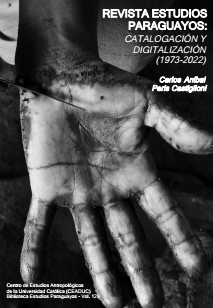Arts and crafts in Paraguay, an analysis of their evolution through the regulation of the Lopist State (1840-1864)
DOI:
https://doi.org/10.47133/114Keywords:
arts, crafts, trade, patents, working classAbstract
The purpose of this article is to know which were the main trades and commercial activities performed by men and women during a specific period of Paraguayan history, and in this way to achieve an approach to issues related to the formation of what would later become the Paraguayan working class. For this, the main sources of analysis kept in the National Archives are used, such as the decrees that regulate the use of sealed paper and the types and uses of trade patents that were issued in the years 1842, 1845, 1852 and 1864. This work proposes that the economic changes that occurred in the studied period required a greater specialization of the workforce and at the same time allowed the emergence of new trades and the appearance of the small merchant.
Downloads
References
Caballero Campos, H. 2011. “El Virreinato del Río de la Plata (1776-1810), en Ignacio Telesca (coord.), Historia del Paraguay, Asunción, Taurus, pp. 135-147.
Chaves, J. C. 2019. Compendio de Historia Paraguaya, Asunción, Editora Continental.
Durán Estragó, M. 2011. “Conquista y colonización (1537-1680), en Ignacio Telesca (coord.), Historia del Paraguay, Asunción, Taurus, pp. 63-86.
Pigna, F. (s.f). Las Pulperías. Buenos Aires: El Historiador. Recuperado de https://www.elhistoriador.com.ar/las-pulperias (consultado el 14 de marzo de 2020).
Potthast, B. 1996. Paraíso de Mahoma o país de las mujeres?, Asunción, Instituto Cultural Paraguayo-Alemán.
Rivarola, M. 2011. Vagos, pobres y soldados. La domesticación estatal del trabajo en el Paraguay del siglo XIX, Asunción, ServiLibro.
Downloads
Published
How to Cite
Issue
Section
License
Copyright (c) 2020 Vicente Alejandro Arrúa Avalos; y Estudios Paraguayos

This work is licensed under a Creative Commons Attribution-NonCommercial 4.0 International License.
















